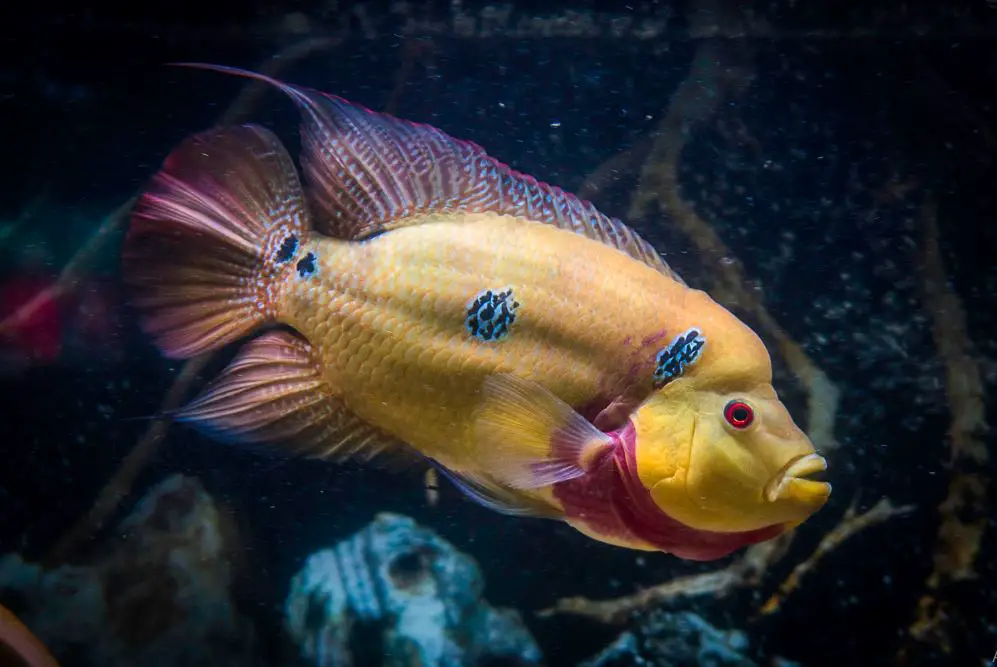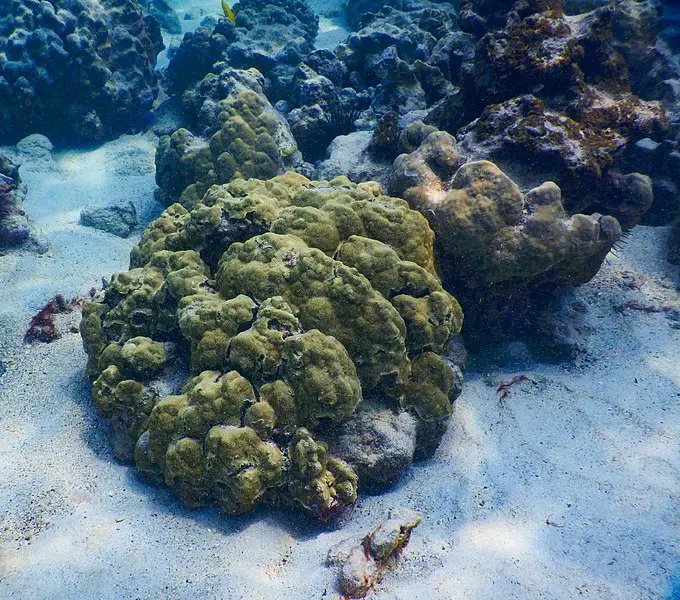A flowerhorn is a type of cichlid well known for the bulging protrusion on its head and colorful markings across its body, but how well do these fish pair with others and can you keep trimac cichlids and flowerhorn together?
Trimac cichlids and flowerhorns have different tank requirements and feeding needs, so they are not compatible. In addition, they are both extremely aggressive towards other species.
There are lots of differences between the trimac cichlid and the flowerhorn when it comes to appearance, but they are both quite similar in temperament, making it difficult to pair them in a tank. The rest of this article will walk you through trimacs and flowerhorns to see which one is right for you.
Trimac Cichlid
The trimac cichlid is a type of aquarium fish that are easygoing and have pretty straightforward care requirements. Hailing from Mexico and Centra America, the trimac cichlid can get pretty big, with males topping out at 14 inches. The chart below outlines some parameters to keep in mind when caring for a trimac cichlid:
| Difficulty Level | Intermediate |
| Lifespan | 10-12 years |
| Temperature | 74 to 86 degrees Fahrenheit (23 to 30 degrees Celsius) |
| pH | 6.5-7.5 |
| Water Hardness | 8-24 gH |
| Tank Size Requirements | 55g for one female; 125g for one male |
The trimac is beautiful in appearance, with a green or yellow colored base, distinct outlined black spots on their sides, and red coloration behind their gills. These colors develop as they mature. Trimacs are one of the longest living aquarium fish species out there, generally living up to 12 years dependent on the quality of your care.
Unfortunately, a true trimac cichlid is hard to find, and most breeds that you’ll find in fish stores are hybrids of trimac and flowerhorn cichlids. If you don’t mind a hybrid, then you can save a good deal of money compared to a true trimac cichlid.
Recommended Tank Environment
Trimac cichlids need lots of space to roam around, and you’ll need at least 125 gallons for a single male. The females are a bit easier on the size requirement, only needing 55 gallons of space. Establishing a natural environment in your tank is ideal for any fish, and big as they are, the trimac cichlid still loves having places to hide.
Stones, roots, and driftwood are ideal decorative elements that make a tank feel like a home. Aquarium plants aren’t recommended, though, since trimac cichlids love to redecorate and will uproot them. Slower currents are ideal for trimacs since they don’t like fast-moving water.
Temperament and Care
A trimac cichlid is extremely aggressive towards other fish and isn’t tolerant of anything. If your tank is on the smaller side, it’s better to keep the trimac by itself. If you’re going to have tankmates for your trimac cichlid, consider other species of cichlid that can handle some roughhousing and hold their own in a tank.
Preferably, your tank should be on the larger side for this, and some prior cichlid experience is ideal. Feed your tank a varied diet of live and frozen foods to meet their nutritional needs. Feed three times a day to prevent overeating and reduce aggression in the tank.
Flowerhorn Cichlid
The flowerhorn is an aquatic freshwater species of cichlid, earning their name from the notable flower bulge on their heads. Selectively bred for their horn-like protrusion, flowerhorns are extremely beautiful fish popular among aquarists. Here’s a quick overview on flowerhorns:
| Difficulty Level | Intermediate |
| Life Span | 10-12 years |
| pH | 6.5-7.8 |
| Water Hardness | 9-20 dGH |
| Minimum Tank Size | 70 gallons |
Flowerhorns are man-made fish designed to be big and bold. Both males and females can reach impressive sizes up to 16 inches, and these fish have one of the longest lifespans in the trade, generally living for 10-12 years.
Recommended Tank Environment
Flowerhorns are omnivorous and need a varied diet of plant and animal foods. It’s best to aim for densely vegetated waters with slow-moving currents. As mentioned before, they should be in a tank of at least 70 gallons.
For two, you’ll need at least 150 gallons. If you want to put them with other species of cichlids, tanks of 200 gallons or up are recommended. Make sure that if you’re putting flowerhorns with other fish, that you’re picking good tankmates and have lots of space available to prevent territorial disputes.
Temperament and Care
Flowerhorns are highly aggressive towards other species of fish and even their own kind. They require a temperature of 80-89 degrees Fahrenehit (26.6-31.6 degrees Celsius) and prefer harder waters. Decorations like caves and rocks are ideal in a flowerhorn tank, regardless of whether you’re planning on adding tankmates.
They need somewhere to hide, and planting your tank with hardy plants that can take a beating is ideal for preventing your cichlids from uprooting them.
Can Cichlids and Flowerhorn Live Together?
Cichlids and flowerhorn are not ideally compatible. They are both highly aggressive and are prone to fighting often. Flowerhorn prefer planted tanks, while trimac cichlids will uproot just about anything given the opportunity.
Their water parameter and dietary requirements vary, making it quite difficult to pair them and keep both happy. If you are planning on pairing the two, it’s important to provide plenty of cover for them to establish territories so that they’re not constantly fighting.
Similarly, you should do regular small feedings three times a day to reduce aggression and prevent overeating.
It’s super important that you don’t put flowerhorns or trimac cichlids in a tank with shy or slow-moving fish. These cichlids will kill them in a heartbeat. If you’re going to put cichlids together, you should be very experienced and have a very large tank—200 gallons or bigger—to house them safely, spread aggression, and reduce territorial disputes.
These two giants in the aquarist hobby are beautiful, but if you want to keep your fish beautiful and happy, it’s usually better to keep them apart.
Final Thoughts
Flowerhorns and trimac cichlids are two species of cichlid well-known for their massive size, long lifespan, and beautiful coloring. In light of their different tank requirements and highly aggressive nature, they’re not ideal to be put together as tankmates.


